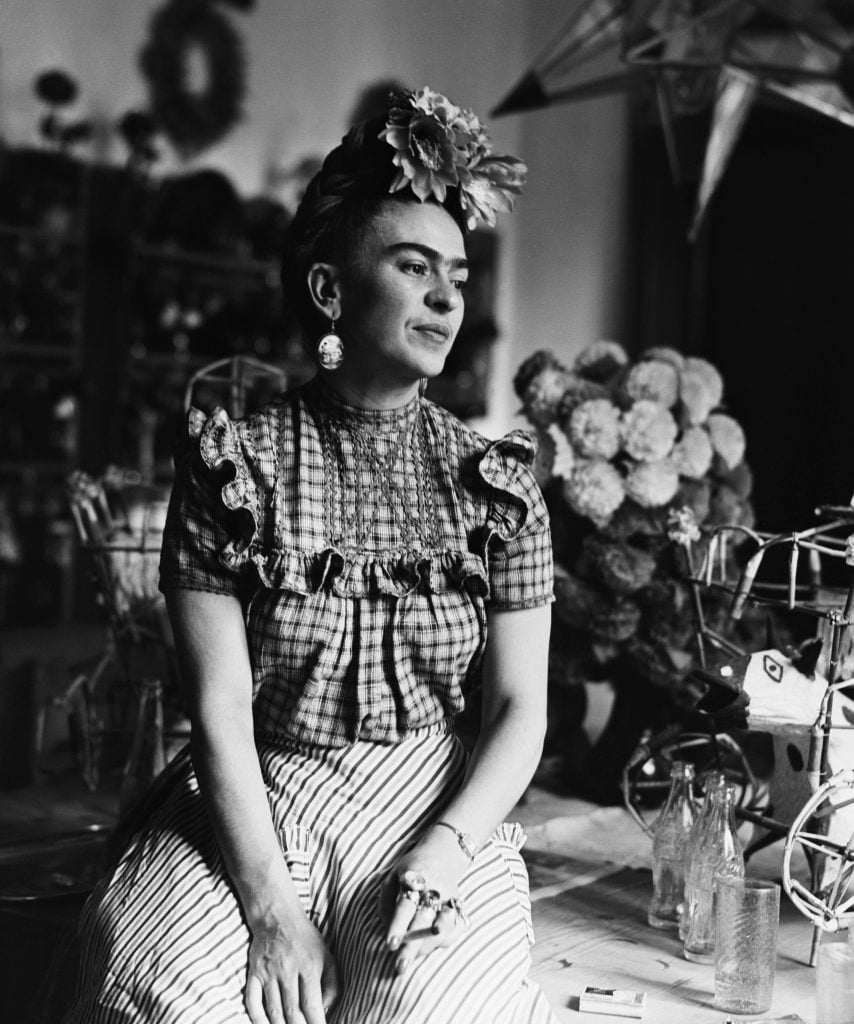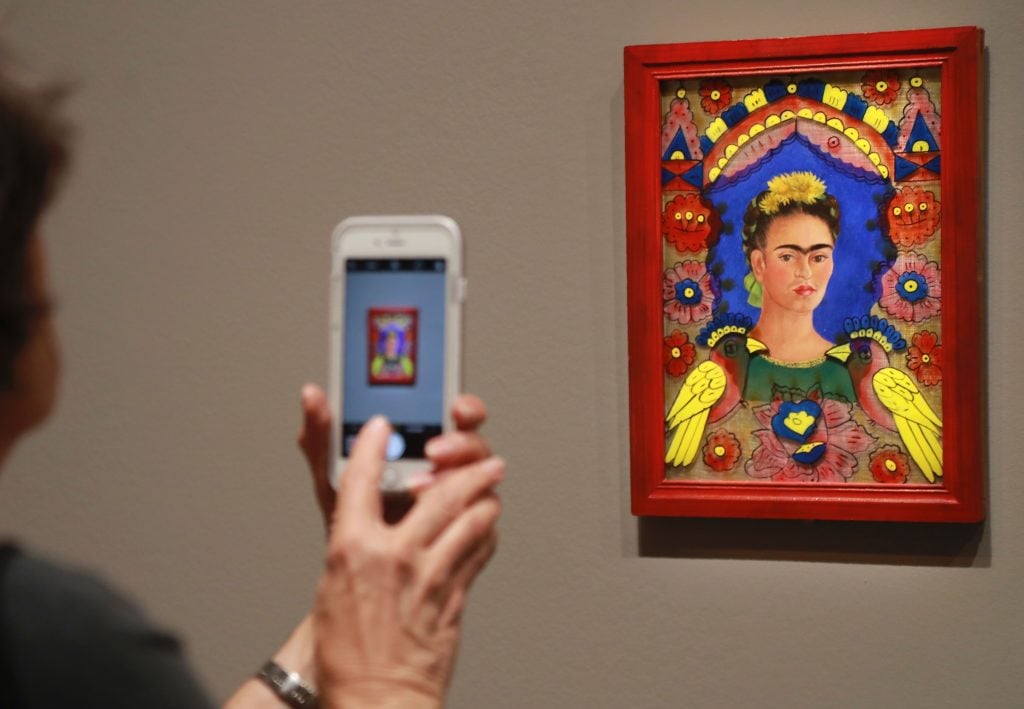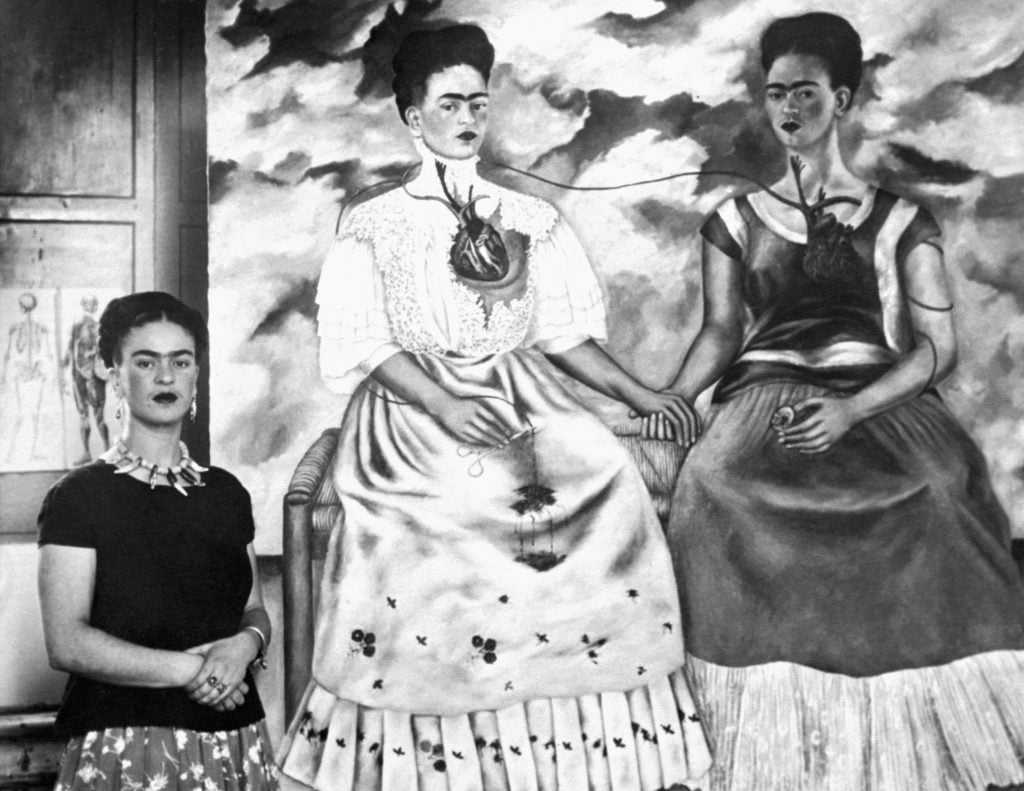Art World
Art Bites: Why Frida Kahlo Hated the French Surrealists
Was Frida Kahlo a Surrealist? She didn’t think so. And she hated them.

Frida Kahlo’s status as a Surrealist has been debated for years, but Kahlo herself said, “I never knew I was a Surrealist ’til André Breton came to Mexico and told me I was.” Breton—a French poet and the founder of Surrealism—visited the artist during his four-month-long trip to Mexico in 1938 and invited her to exhibit in Paris in 1939, describing her work as “a ribbon around a bomb.” But Kahlo’s impression of the French Surrealists, which she wrote about in a letter to the American photographer (and her lover) Nickolas Muray, was, well, less positive.
“They are so damn “intellectual” and rotten that I can’t stand them anymore,” he wrote to Muray in February 1939. “I would rather sit on the floor in the market of Toluca and sell tortillas, than have anything to do with those ‘artistic’ bitches of Paris.”
What was their offense? Kahlo went on: “They sit for hours in the ‘cafés’ warming their precious behinds, and talk without stopping about ‘culture,’ ‘art,’ revolution,’ and so on and so forth, thinking themselves the gods of the world, dreaming the most fantastic nonsense, and poisoning the air with theories and theories that never come true… Shit and only shit is what they are.”
At Breton’s invitation, Kahlo showed two paintings in “Mexique,” an exhibition of artworks by Mexican artists, but was disappointed to find the show poorly organized. Even more egregious to Kahlo, she found her work, including the 1938 self-portrait The Frame, displayed among “Mexican knick-knacks.”

Frida Kahlo, The Frame (1938) on view at “Mexique” at the Grand Palais in Paris, 2016. Photo: Jacques Demarthon / AFP via Getty Images.
She decried in a March 1939 letter: “My paintings were quietly waiting for me at the customs office because Breton had not even picked them up. You don’t have even the slightest idea of what kind of old cockroach Breton is, along with almost all those in the Surrealists group.” (Kahlo, though, was partial to Marcel Duchamp at whose home she stayed during her time in Paris; she called him “the only one of the artists and painters here who has his feet on the ground and his brain in the right place.”)
Still, her relationship with the Surrealists endured, for at least a little while. Her other works, The Two Fridas (1939) and The Wounded Table (1940), were included in Breton’s 1940 International Exhibition of Surrealism in Mexico City.
In a later letter to Muray, she wrote: “They thought I was a Surrealist, but I wasn’t. I never painted dreams. I painted my own reality.” Dreams were at the core of the Surrealist’s mission: in 1924, Breton published the Manifesto of Surrealism, in which envisioned a combination of “two states, dream and reality, which are seemingly so contradictory, into a kind of absolute reality, a surreality.” The use of automatism and pulling supposedly random imagery from the unconscious were key parts of Surrealist methodology.

Frida Kahlo standing alongside The Two Fridas (1939). Photo: Bettmann / Contributor.
But where Surrealists let go of their rational control of their paintings and symbols, Kahlo’s artworks were intentionally composed into narratives about her conscious life. Political outspokenness was also discouraged within the French Surrealist movement—Salvador Dalí was expelled from the group in 1939 partly because of his outspoken support of authoritarianism—and Kahlo’s work was deeply political, loaded with explicit socialist messages as in Marxism Will Give Health to the Sick (1954).
Many biographies of the artist refer to her as one of Surrealism’s most significant figures. But from her outspoken criticism of the movement—she once declared: “I hate Surrealism. It’s a decadent manifestation of bourgeois art”—it’s pretty clear she didn’t count herself in their number.
What’s the deal with Leonardo’s harpsichord-viola? Why were Impressionists obsessed with the color purple? Art Bites brings you a surprising fact, lesser-known anecdote, or curious event from art history. These delightful nuggets shed light on the lives of famed artists and decode their practices, while adding new layers of intrigue to celebrated masterpieces.





